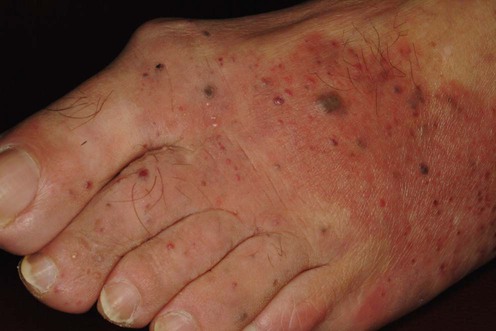Kaposi sarcoma

First-line therapies
A randomized controlled trial of highly active antiretroviral therapy versus highly active antiretroviral therapy and chemotherapy in therapy-naive patients with HIV-associated Kaposi sarcoma in South Africa.
Mosam A, Shaik F, Uldrick TS, Esterhuizen T, Friedland GH, Scadden DT, et al. JAIDS 2012; 60: 150–7.
Second-line therapies
Third-line therapies





 Pegylated liposomal doxorubicin
Pegylated liposomal doxorubicin Paclitaxel
Paclitaxel Antiretroviral therapy
Antiretroviral therapy Cryotherapy
Cryotherapy Radiotherapy
Radiotherapy Alitretinoin gel
Alitretinoin gel Intralesional interferon
Intralesional interferon Interferon-α2b
Interferon-α2b Intralesional vinblastine
Intralesional vinblastine Bevacizumab
Bevacizumab Sorafenib
Sorafenib Lenolidamide
Lenolidamide Thalidomide
Thalidomide Liposomal all-trans-retinoic acid, intravenous
Liposomal all-trans-retinoic acid, intravenous Photodynamic therapy
Photodynamic therapy 9-cis-retinoic acid
9-cis-retinoic acid Etoposide
Etoposide mTOR inhibitors (sirolimus/rapamycin)
mTOR inhibitors (sirolimus/rapamycin) IL-12
IL-12 Matrix metalloproteinase inhibitor (COL-3 [metastat])
Matrix metalloproteinase inhibitor (COL-3 [metastat]) Halofuginone
Halofuginone Imiquimod 5% cream
Imiquimod 5% cream Sodium tetradecyl sulfate 3%
Sodium tetradecyl sulfate 3% Surgical excision
Surgical excision Antiviral agents (ganciclovir, valganciclovir, foscarnet)
Antiviral agents (ganciclovir, valganciclovir, foscarnet) Intramuscular immuneglobulin
Intramuscular immuneglobulin